The axial skeleton - vertebral lateral overview (blz. 44 the dog anatomy workbook)
1/16
There's no tags or description
Looks like no tags are added yet.
Name | Mastery | Learn | Test | Matching | Spaced |
|---|
No study sessions yet.
17 Terms
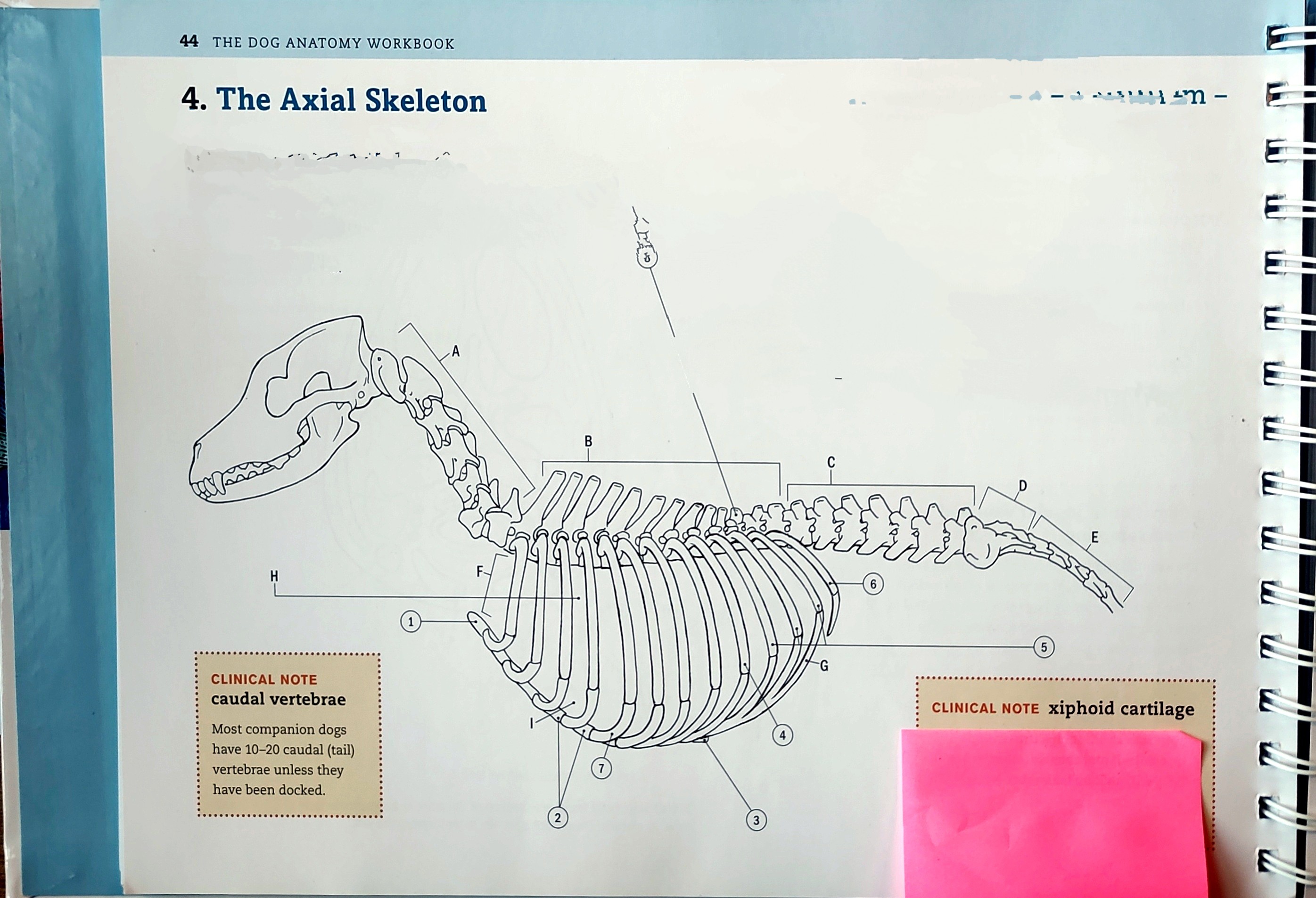
A
Cervical vertebrae, C1-C7
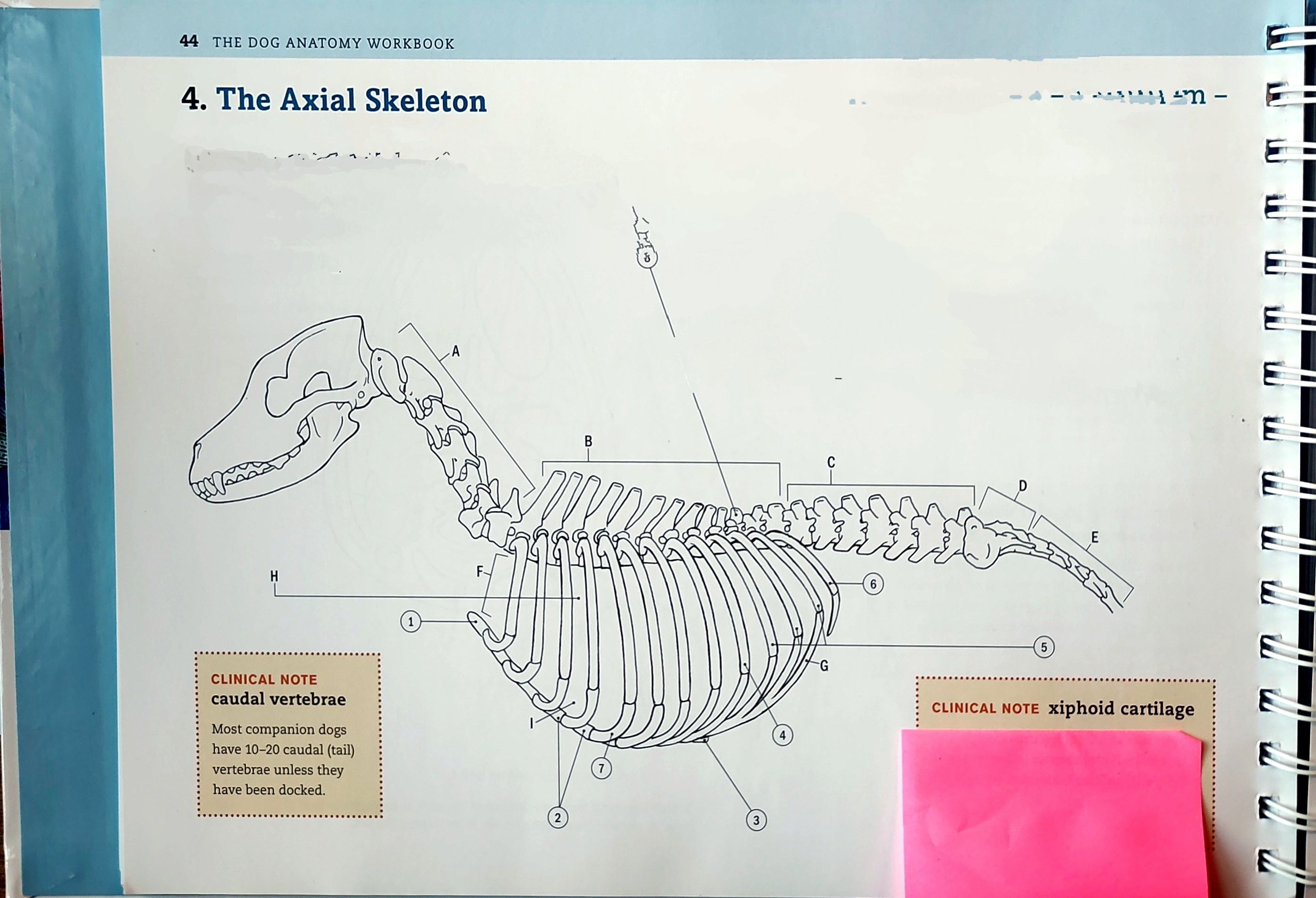
B
Thoracic vertebrae, T1-T13
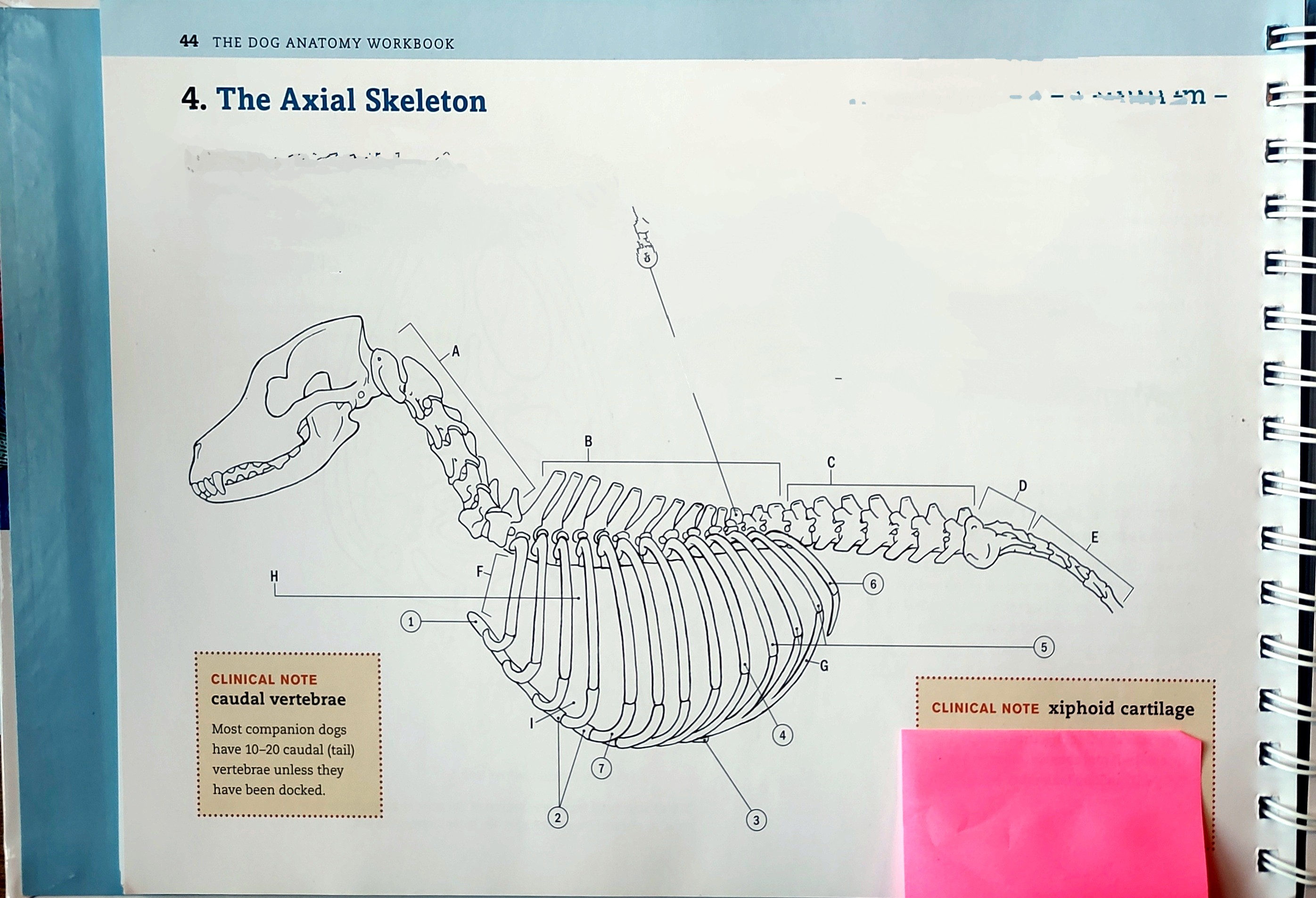
C
Lumbar vertebrae, L1-L7
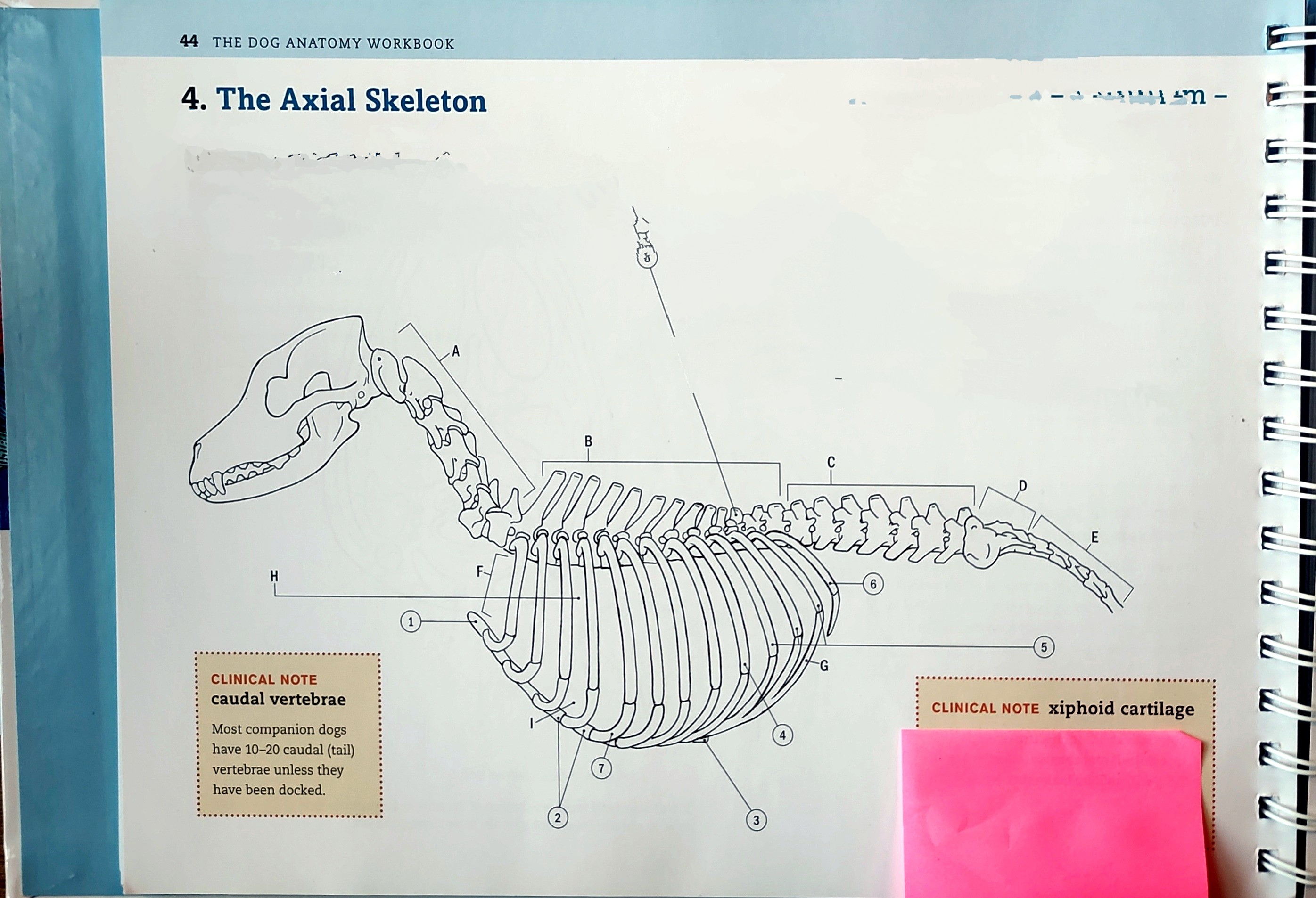
D
Sacrum, S1-S3 (fused)
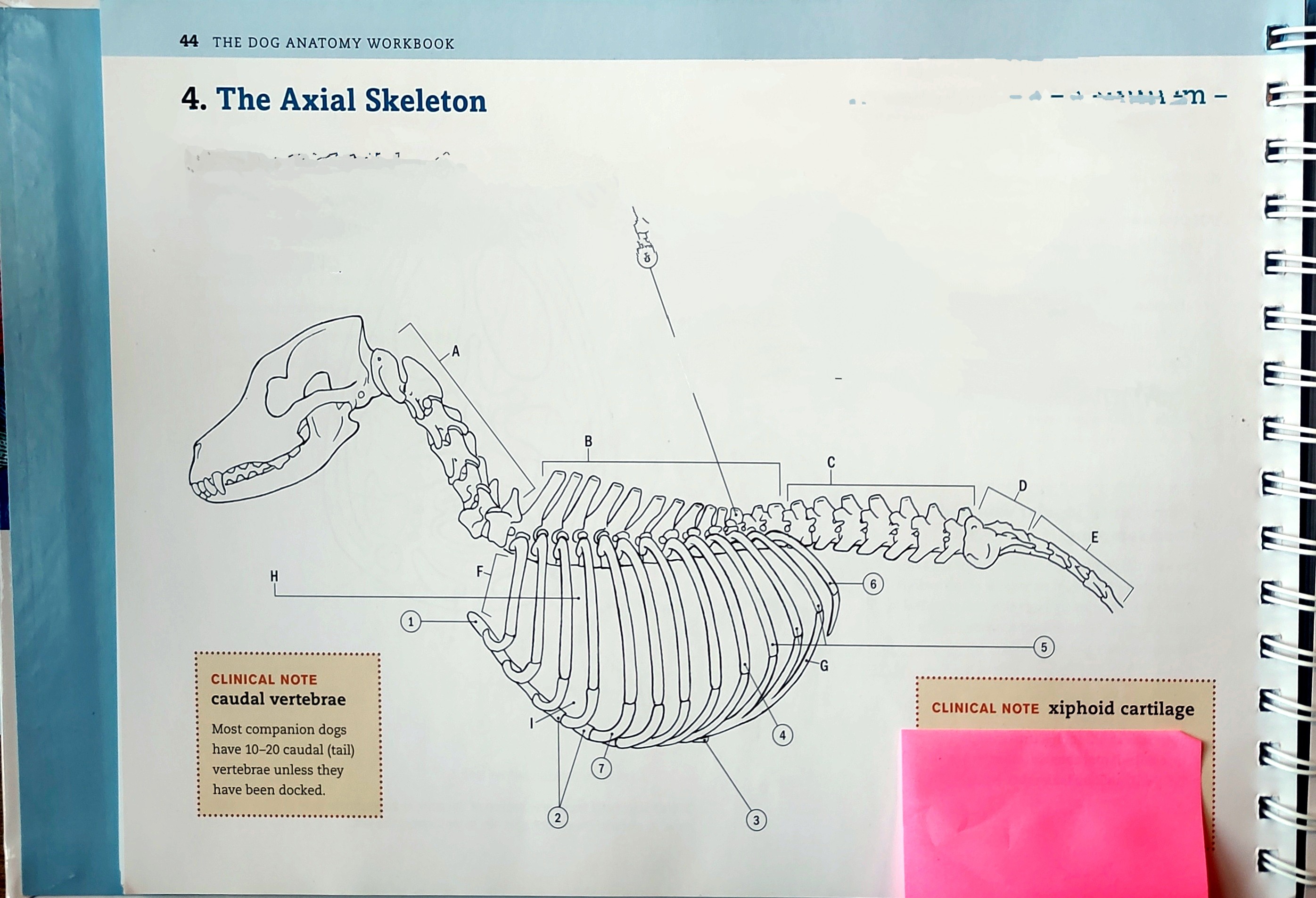
E
Caudal vertebrae, variable number
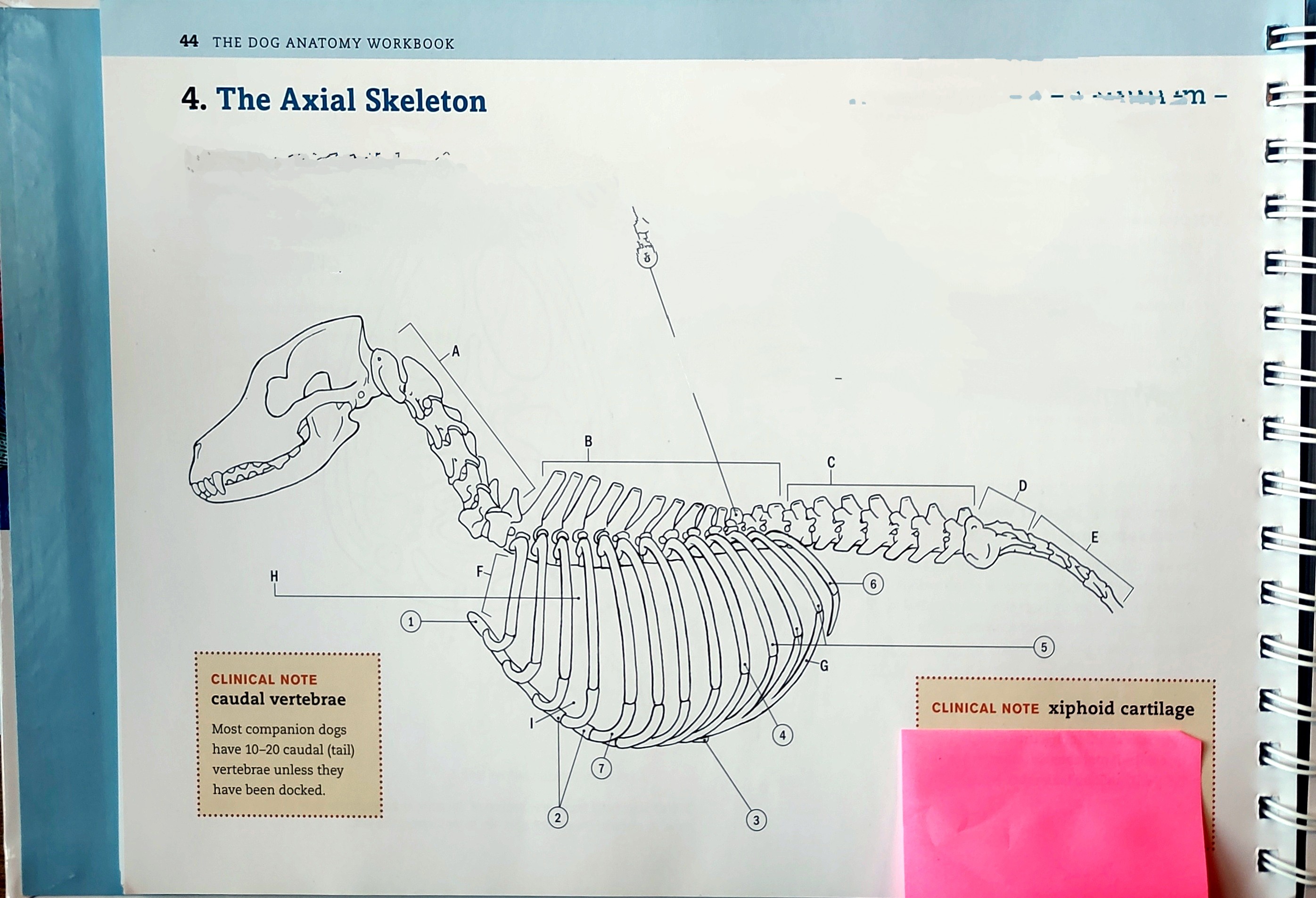
F
Thoracic inlet
= the opening at the top of the thoracic cavity, allowing the passage of structures between the neck and thorax.
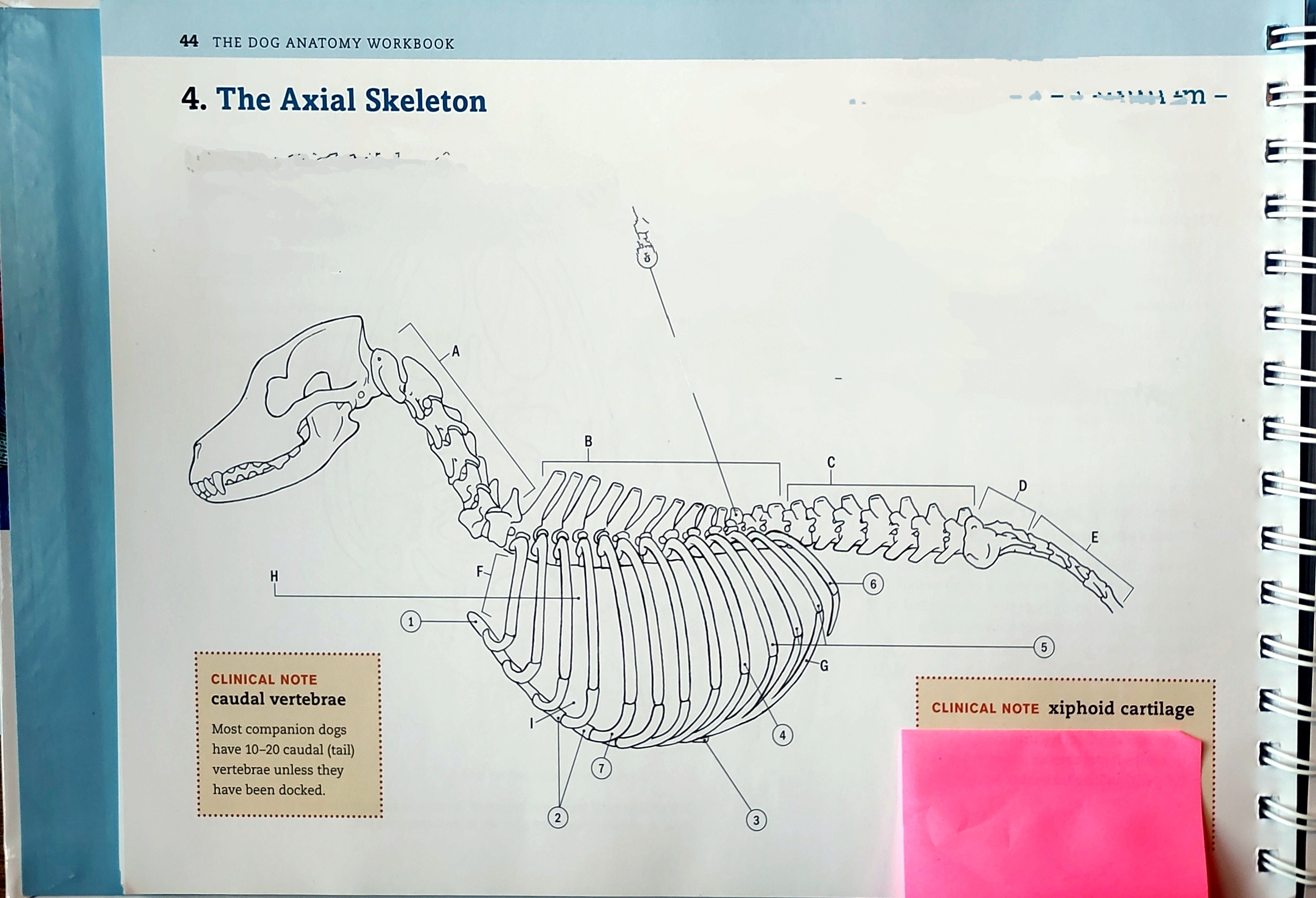
G
Costal arch
= the bony structure formed by the cartilaginous extensions of the lower ribs, connecting to the sternum.
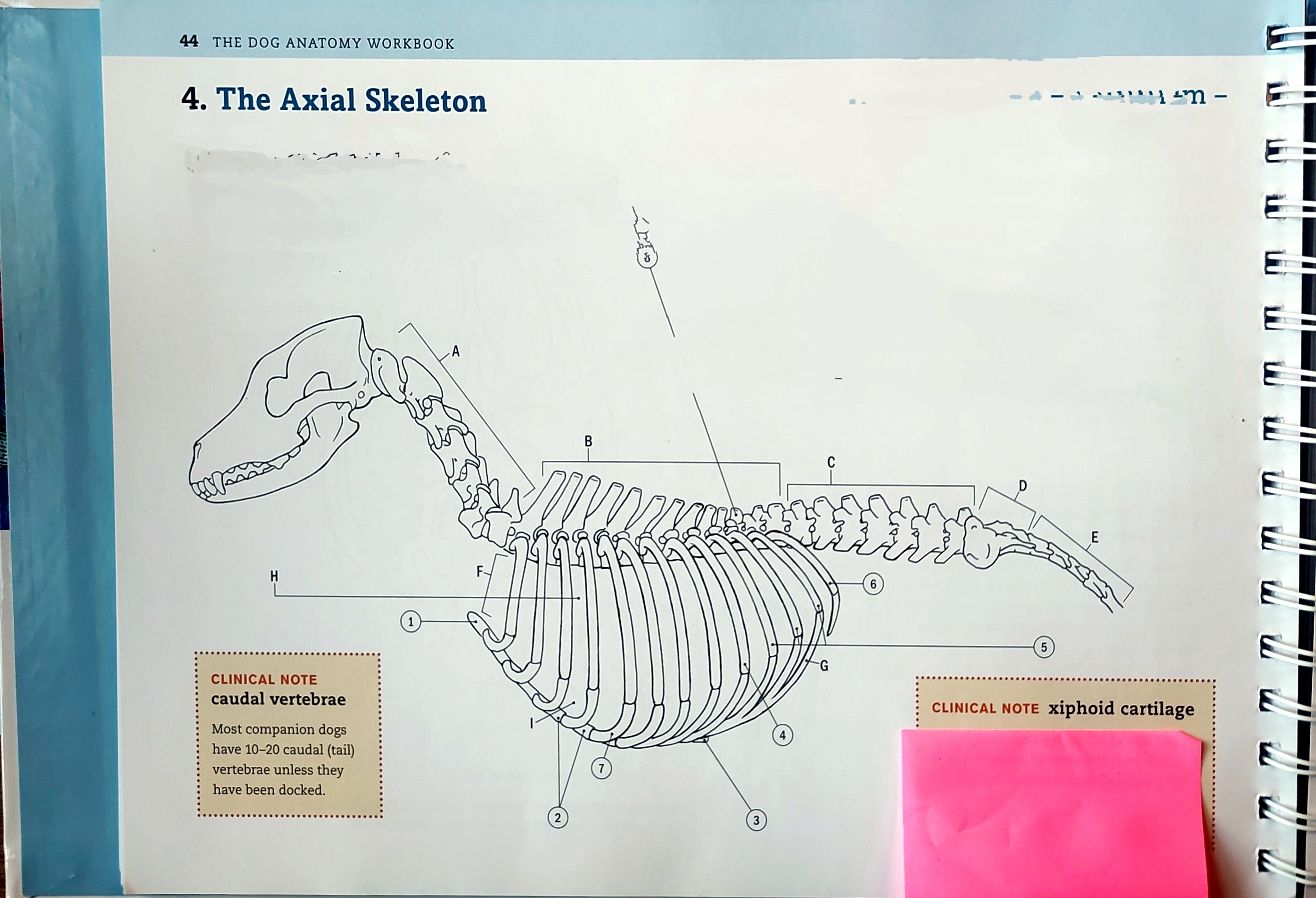
H
Intercostal space
= the anatomical space between adjacent ribs, containing muscles, nerves, and blood vessels.
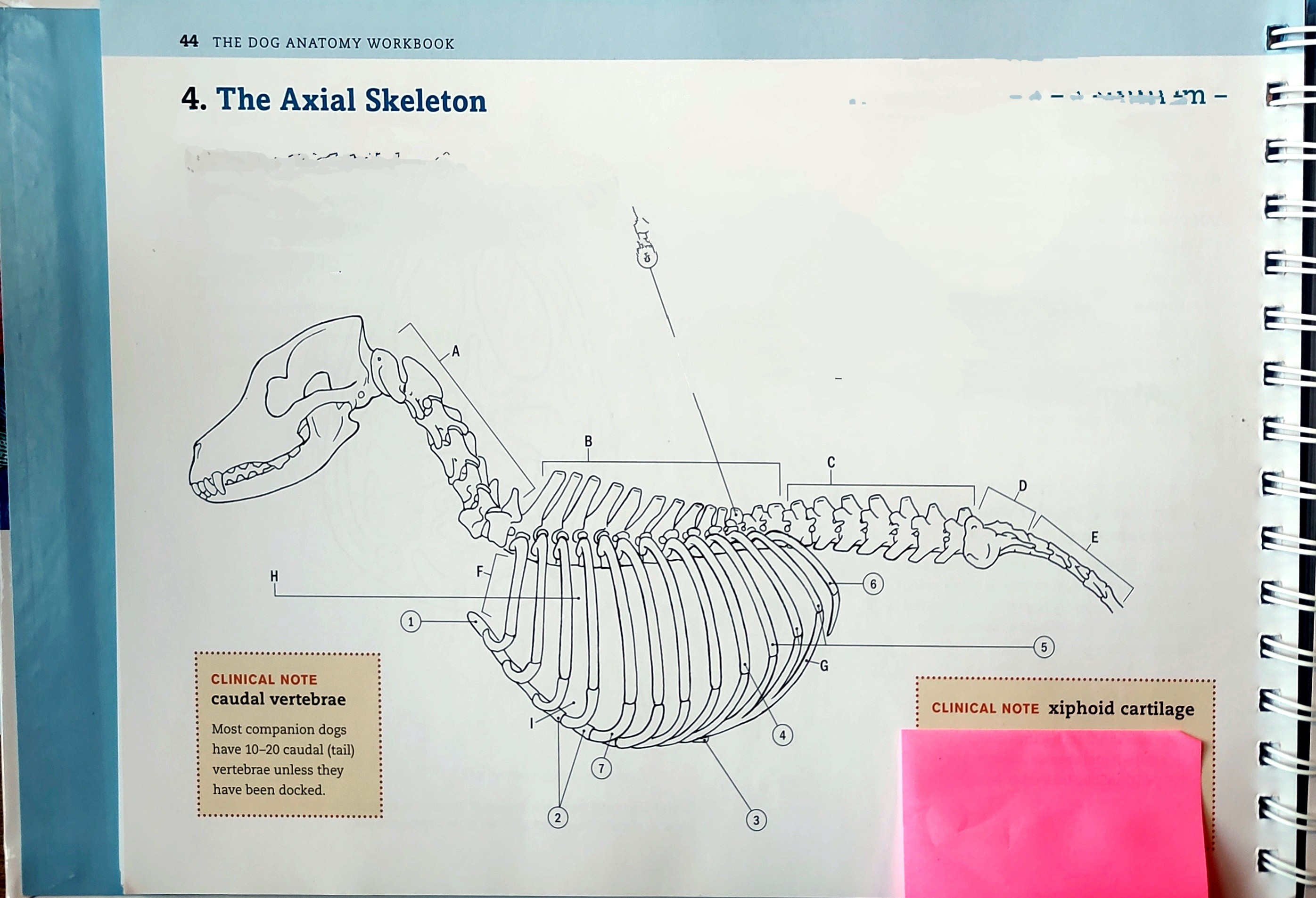
I
Interchondral space
= the gap between adjacent costal cartilages, allowing for flexibility and movement of the rib cage.
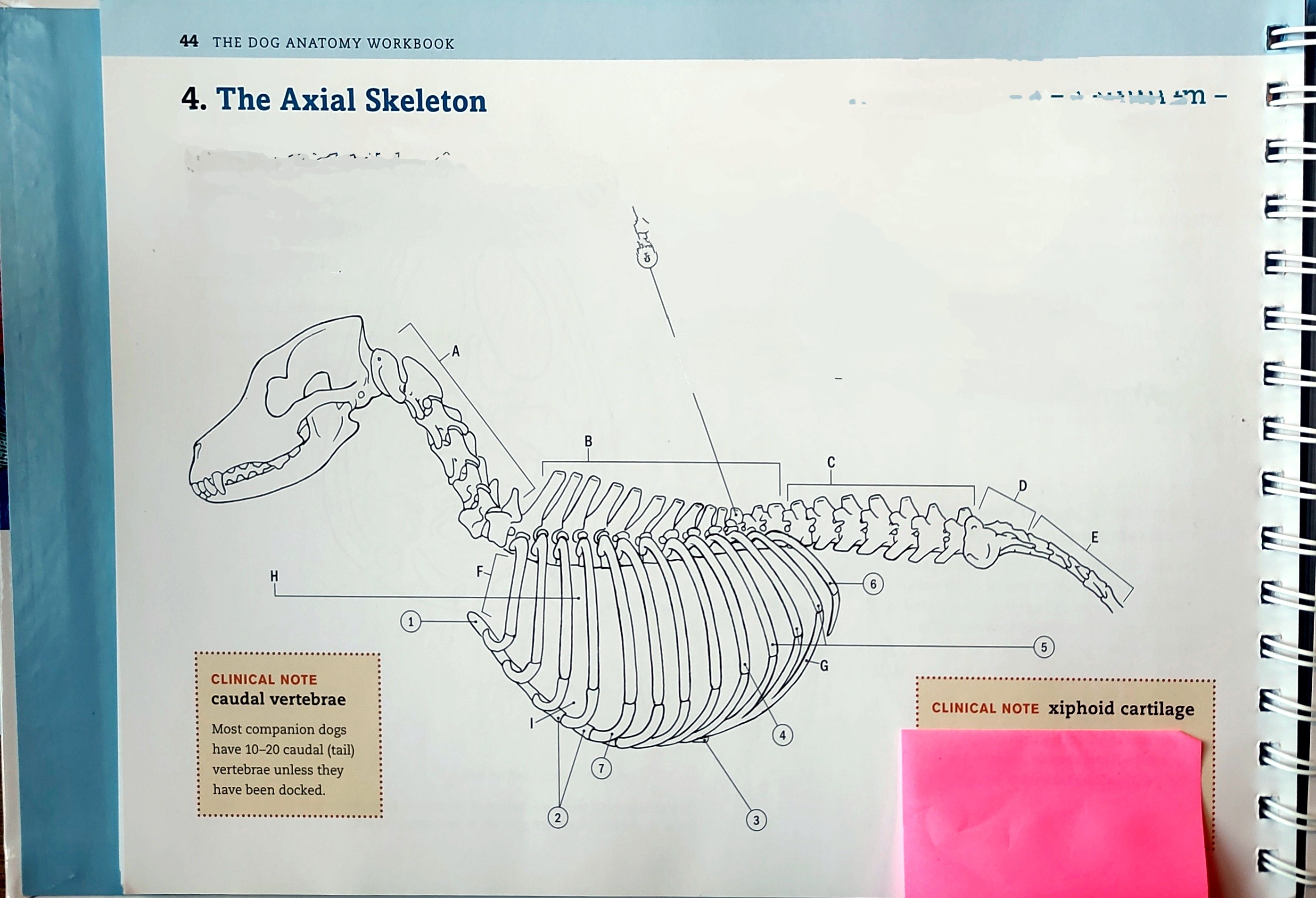
1
Manubrium of sternum
= the broad, upper part of the sternum that articulates with the clavicles and the first pair of ribs, serving as an important attachment point in the thoracic skeleton.
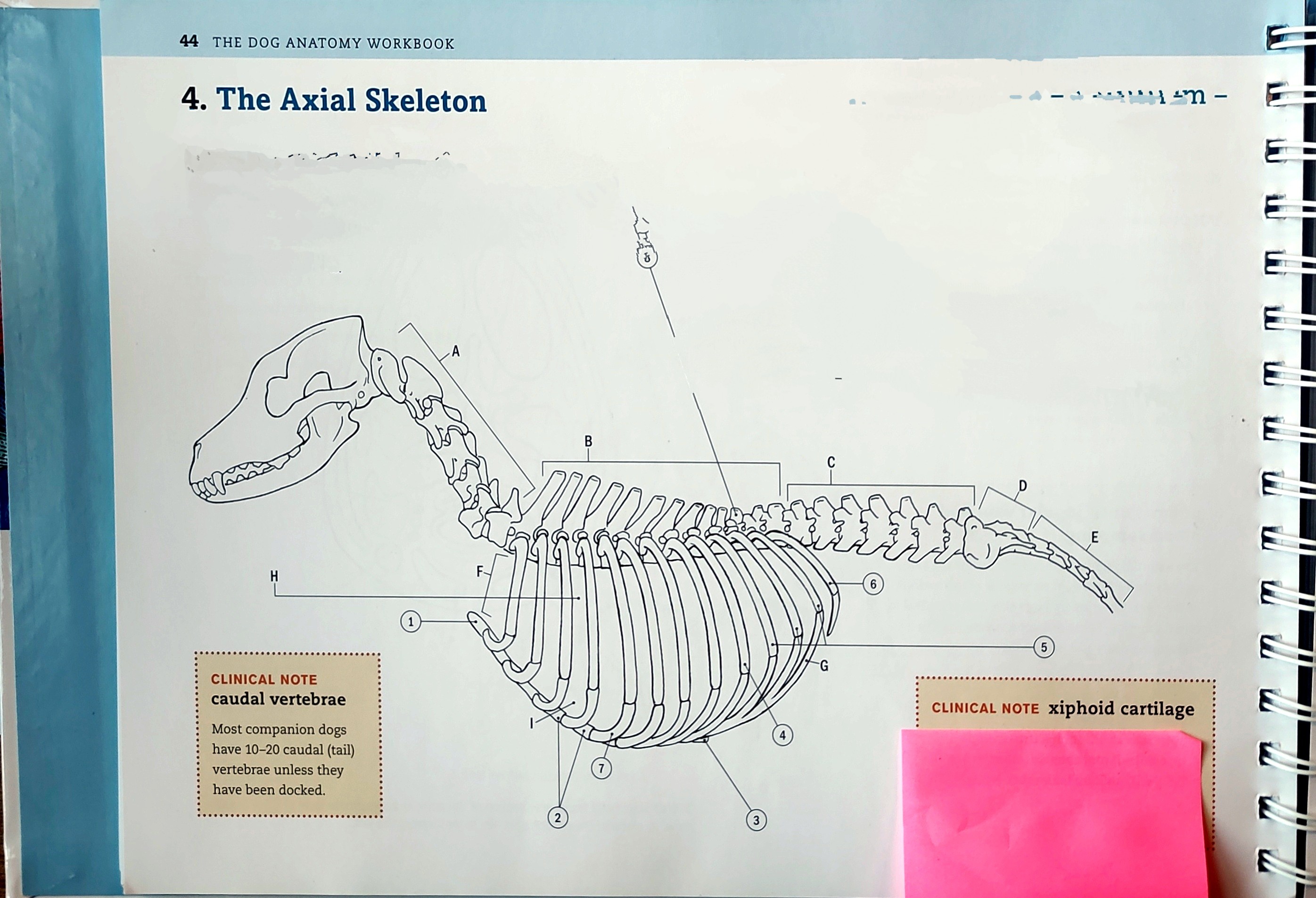
2
Sternebrae (8 intotal)
= The sternum consists of 8-9 bones that together form the sternebrae, serving as the central structure of the thoracic skeleton. These bones include the manubrium, the body of the sternum, and the xiphoid process. The sternebrae articulate with the ribs via costal cartilages, providing attachment and support for the ribcage, which is crucial for protecting the heart and lungs.
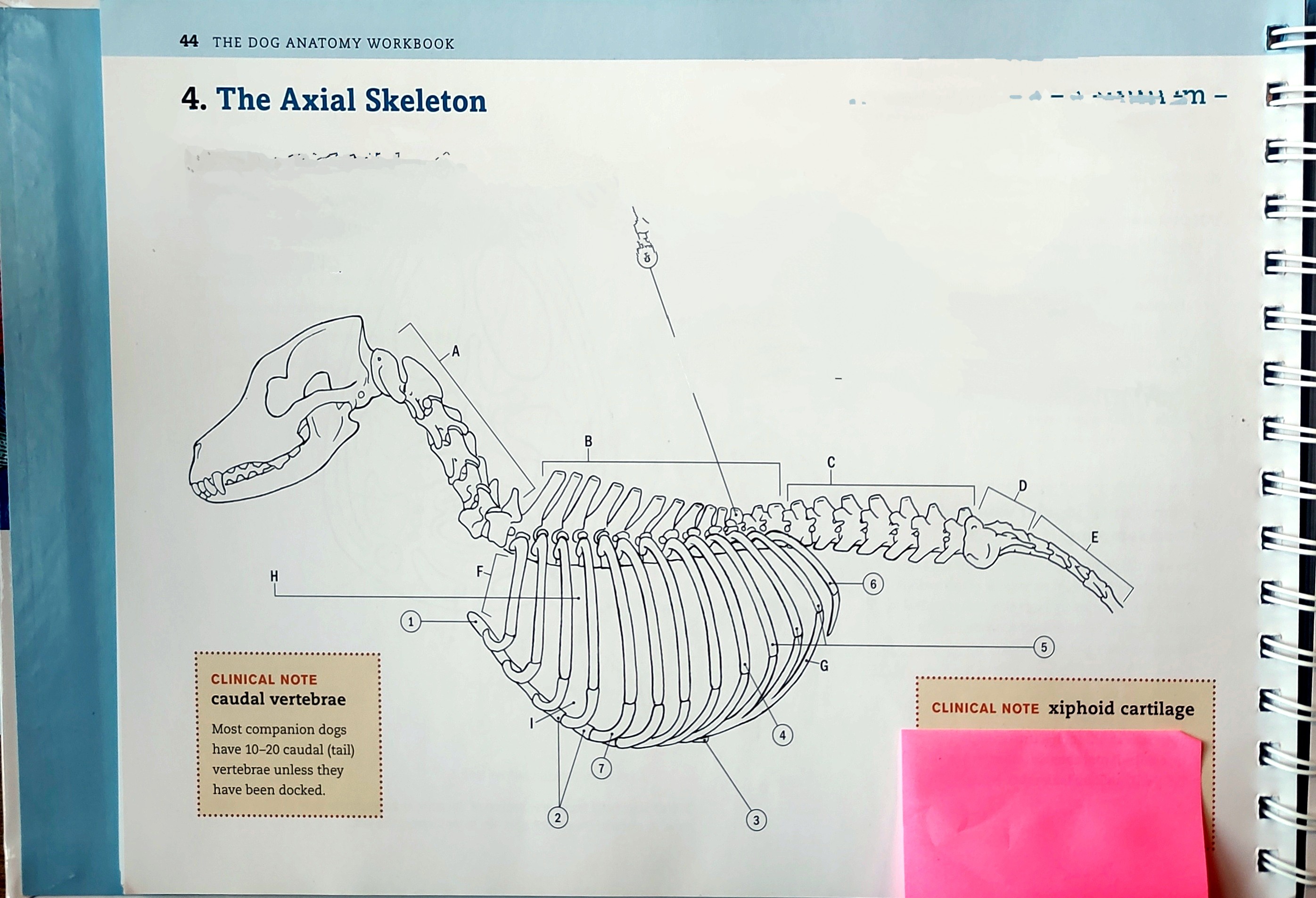
3
Xiphoid cartilage
= The xiphoid process is the smallest and most inferior part of the sternum, composed primarily of cartilage in youth, which may ossify into bone in adults. The xiphoid process is not only a point of attachment for the diaphragm, one of the primary muscles involved in respiration, but it also supports the abdominal muscles and serves as an attachment point for various ligaments and connective tissues. Its location aids in defining boundaries for various thoracic and abdominal surgical procedures.

4
Rib 9 (last sternal rib)
= classified as a false rib, which means it does not have a direct connection to the sternum but instead connects indirectly through the costal cartilage of Rib 8. In canines, this rib is situated in the lower part of the rib cage and plays a critical role in the overall structural integrity of the thoracic cavity. Rib 9 serves not only to protect vital organs such as the heart and lungs but also contributes to the flexibility of the rib cage, allowing for the expansion and contraction necessary for respiration. The positioning of Rib 9 aids in forming the costal arch along with other lower ribs, providing support and stability to the rib cage while allowing for movement during physical activities such as running and jumping, which is vital for a dog's mobility and health.
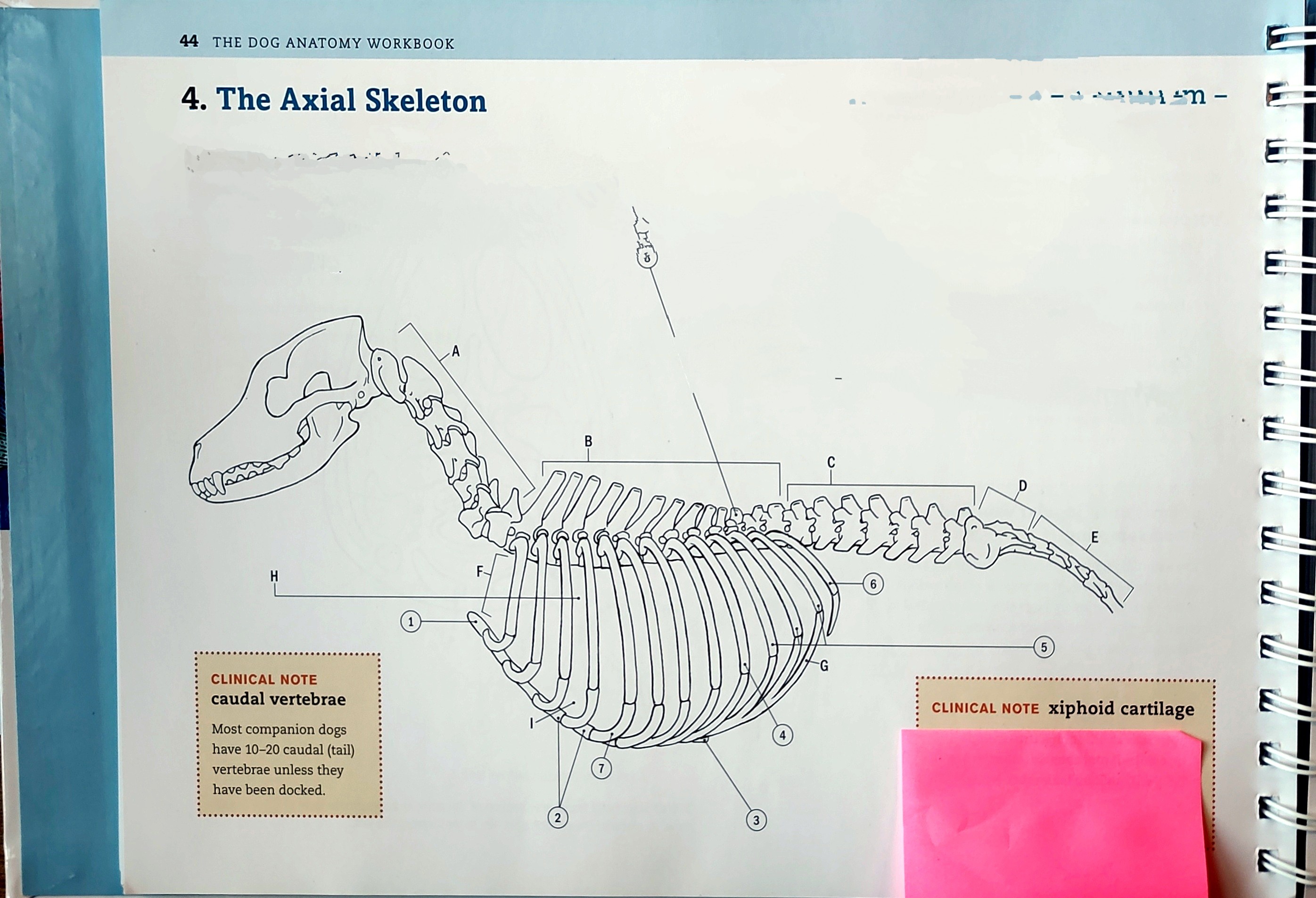
5
Ribs 10-12 (asternal ribs)
Ribs 10 to 12 are classified as asternal ribs, meaning they do not have a direct attachment to the sternum. Instead, these ribs connect indirectly to the costal cartilage of the ribs above them (Ribs 8 and 9), contributing to the flexibility and expansion of the rib cage during respiration. In canines and other mammals, these ribs are located towards the lower section of the rib cage, helping to provide structure and support. The asternal ribs play an essential role in protecting the internal organs within the thorax, including the heart and lungs, while also allowing for significant movement during activities such as running and jumping. Moreover, the positioning of these ribs contributes to the formation of the costal arch, an important aspect of the overall thoracic structure which aids in both stability and mobility.

6
Rib 13(floating rib)
= Rib 13 is classified as a floating rib because it does not attach to the sternum or to the costal cartilages of any other ribs. In canines and other mammals, floating ribs have a free end that is not connected to the rib cage, which contributes to the flexibility of the thoracic structure. Floating ribs typically are shorter and have a more variable anatomy compared to the other ribs. They provide structural support to the thoracic cavity and protection to the organs within but do not contribute to the stability of the ribcage in the same way as the sternal or asternal ribs. In addition, the position of floating ribs may help accommodate for diaphragm movement during respiration, allowing for greater expansion of the thoracic cavity.
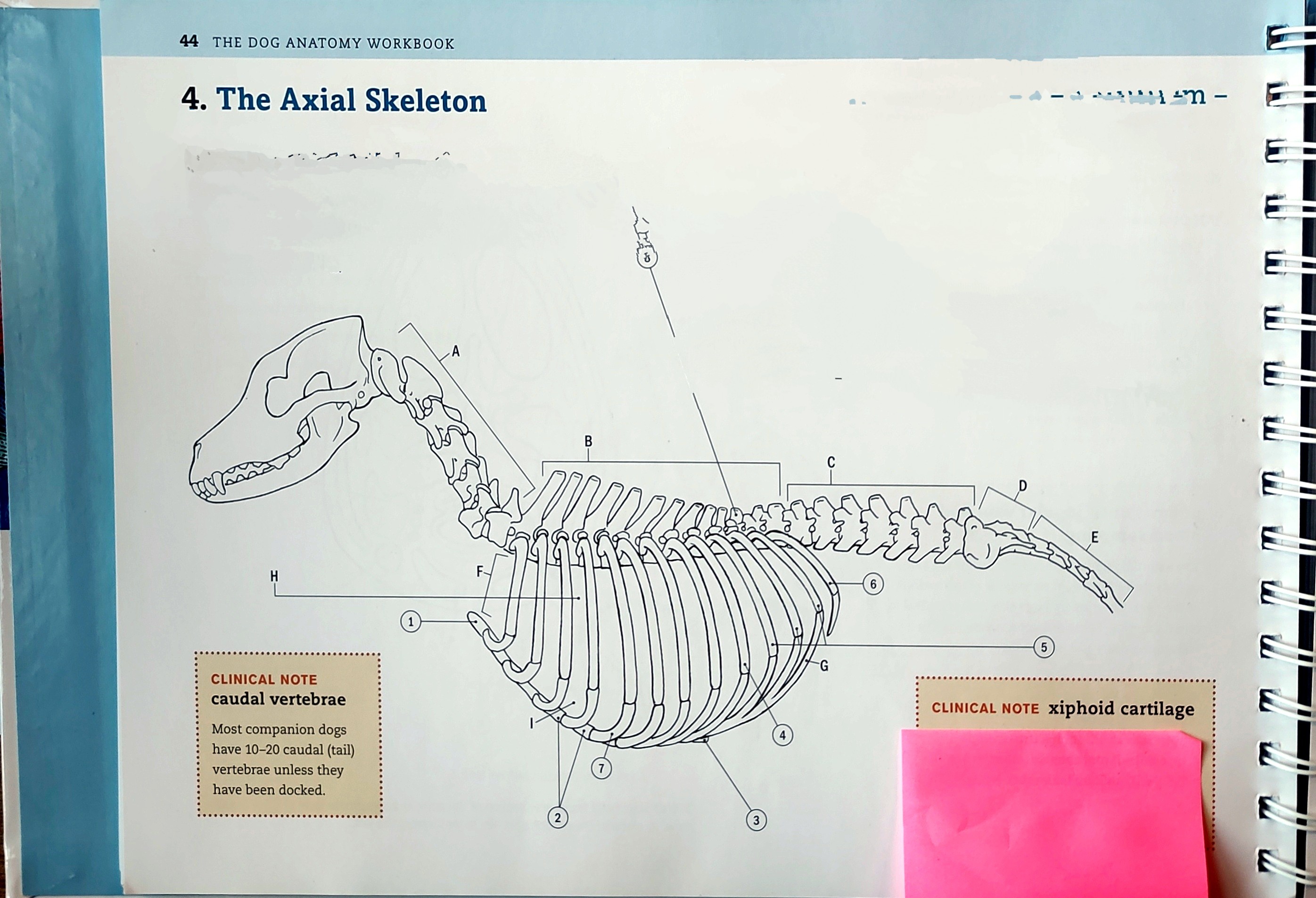
7
Costal cartilage
= Costal cartilage is the flexible connective tissue that connects the ribs to the sternum in the ribcage, providing the necessary elasticity for organic movement and adaptation. Comprised mostly of hyaline cartilage, it allows the ribcage to expand and contract during respiration, facilitating breathing. The costal cartilage extends from the ends of the ribs to the sternum, aiding in the formation of the costal arch, which supports the overall structure of the thoracic cavity. Additionally, costal cartilage plays a crucial role in absorbing impacts to the ribcage, thus protecting the organs within from trauma
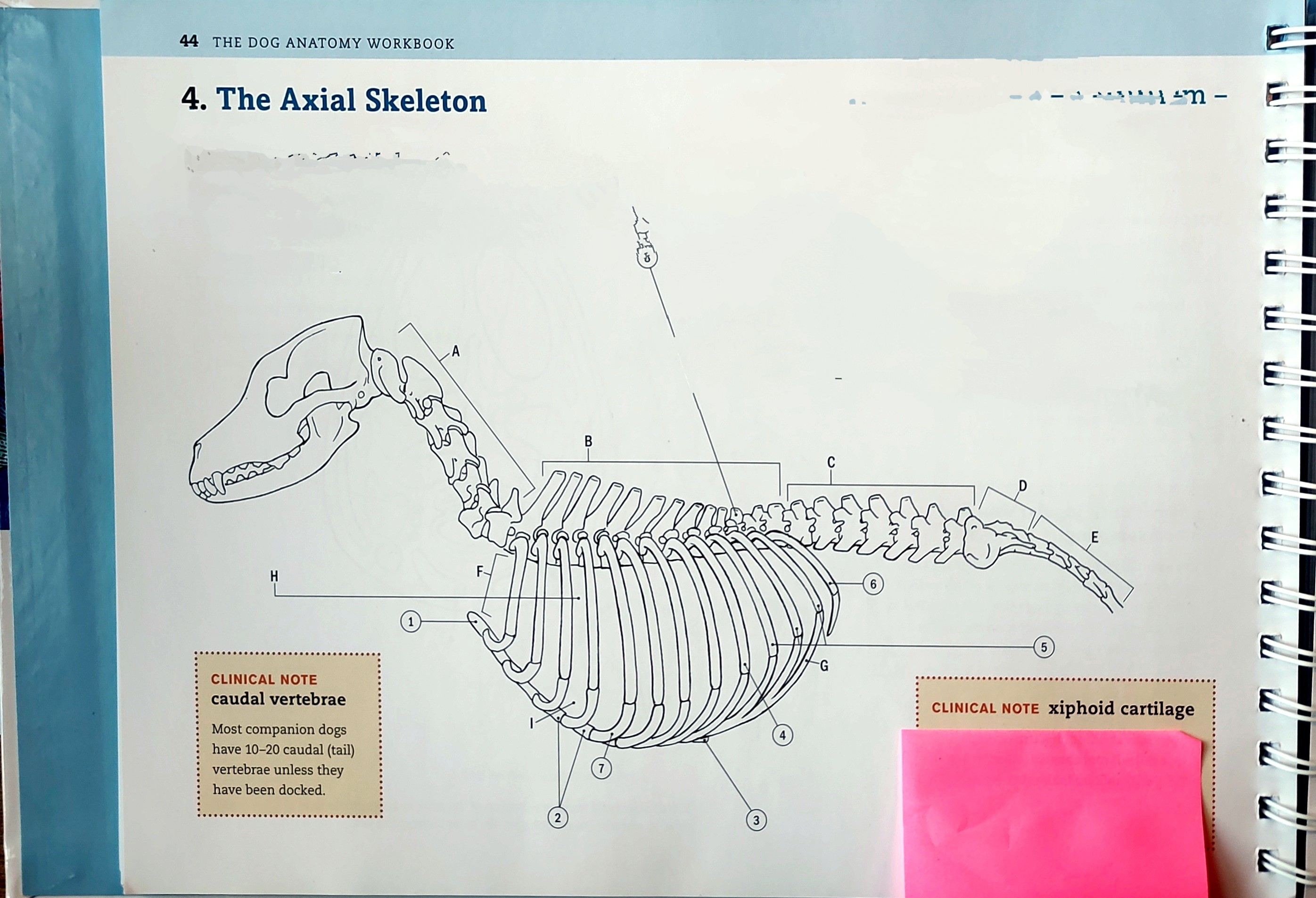
8
Anticlinical vertebra (thoracic 11)
= The anticlinical vertebra is a term used to describe the 11th thoracic vertebra in many mammals, including canines. This vertebra is significant because it represents a transition point in the curvature of the thoracic spine, where the angle of the spinous process changes orientation. The spinous process of the anticlinical vertebra is typically more horizontal compared to the vertebrae above and below it, making it a key reference point for veterinarians and anatomists. It also serves as an important attachment site for ligaments and muscles that support the spine and thoracic cavity. The stability provided by the thoracic 11 plays a crucial role during movement and is essential for maintaining the overall integrity of the vertebral column while allowing for the flexibility necessary for the rib cage during respiration.